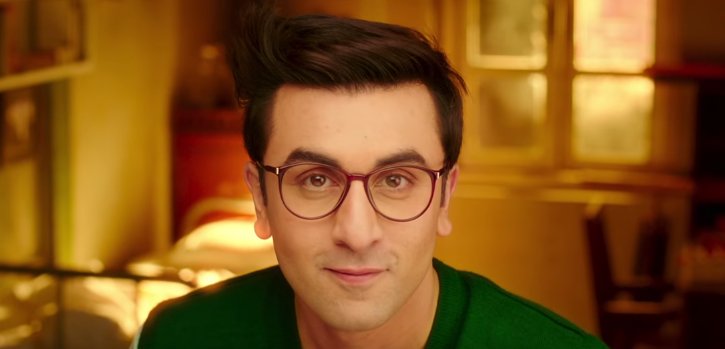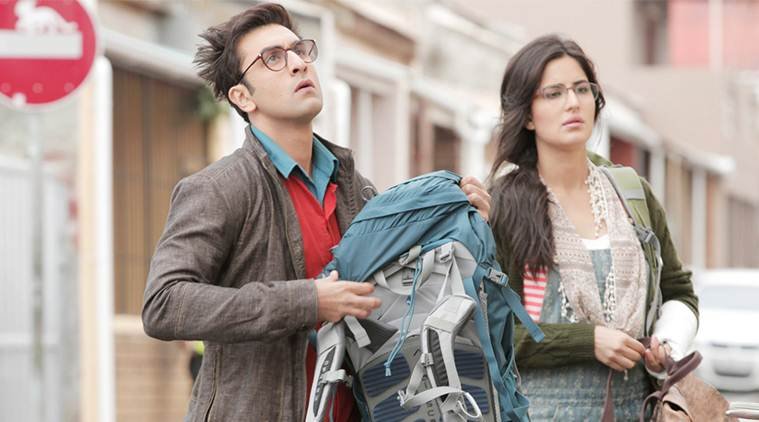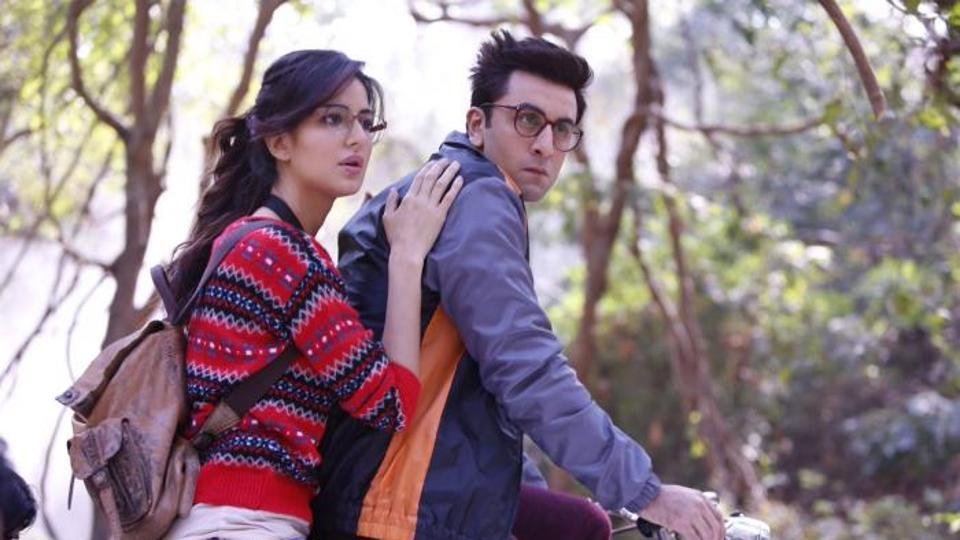Not that the rest of India cares, but there is a Satyajit Ray classic that every second Bengali person you know will name in their list of top five favourite films. It’s the 1980 film, Hirak Rajar Deshe, which is set in a kingdom ruled by a tyrant where almost everyone has to speak in rhymes. The only person who does not speak in rhyme is a free-thinking teacher.
In Jagga Jasoos, Ranbir Kapoor plays a character with speech impediment who can only converse freely when he sings. Which means most of his speaking lines in these films are in form of verse. Aww!

As a Bengali, this clever tribute to one of my race’s most revered deities will stay with me but I will never forgive Anurag Basu for passing Katrina Kaif as a Bengali journalist in the film. Just as Manipuris will probably never forgive him for reducing the complex insurgency problems in their state to a bunch of misled youths forming a rebel army.
More on that later. Let’s focus on the Katrina Kaif problem of Jagga Jasoos now. Her introduction scene has her stepping out of an Instagram-friendly, retro-looking Manipur State Transport bus. Need we say she looks like a dream in a tartan print dress? Then, she promptly falls flat on her face while crossing a railing, because, you know, cute girls look cuter when they are being clumsy.
Jagga, who has all this while been gulping down this vision along with a cream roll in a nearby cafe, remains transfixed. She gets up, dusts quaint Manipuri dirt off her clothes and then proceeds to the same cafe. Her left cheek now has an aww-worthy speck of dirt. Jagga has probably stained his pants by now.

The point is, Kaif is a distraction of Katrina Kaif-proportions (if there is no such adjective in the Bollywood lexicon, there should be) in Jagga Jasoos. She is meant to be a foil to Kapoor’s damaged protagonist, a sidekick if you will, but all she ends up being is a clothes-rack for the next season college-look for South Delhi girls. I can almost see Sarojini market being flooded with the dungarees and the tartan-print dress. But, no sir, Kaif is no Bengali journalist. In fact, even Mother Dairy Mishti Dahi is more Bengali than her Shruti Sengupta in Jagga Jasoos.
Okay, maybe I am biased, maybe I should go easy on the Bengali chauvinism. Maybe, Katrina Kaif isn’t the biggest problem of the film at all.

But Mr Basu, what exactly went wrong in the second half of the film? It strangely reminded me of my five-year-old niece’s colouring book. Let me explain how. My niece is always very excited about colouring books. When she gets a new one, she spends the first fifteen minutes colouring carefully within the margins. Not a stroke out of place, every picture lush with colours. However, after the stipulated fifteen minutes, she loses her patience and somehow finishes colouring them with impatient strokes. Jagga Jasoos suffers from the same syndrome.
Basu carefully chooses the palette of the first half of the film. Jagga, is an orphan abandoned in a Manipur hospital. The lush greens of the rice-fields throb against the cobalt blue of the sky and pristine white ducks waddle across the screen, as the little Jagga frolicks about the Reynolds-inspired landscape. He rescues a man (Saswata Chatterjee), who falls off a train, and nurses him back to health. Tutti Futti, the man calls himself. They forge a bond and end up being each other’s emotional crutches. Though the hardened cynic in me will be suspicious of any man who takes to a kid so fondly, I couldn’t help grinning from ear-to-ear for most parts of this section.

Soon, they set up a bamboo house in an emerald green village where they spend a whole lot of time doing quaint things like splashing about in puddles and splashing about in some more puddles. Until a mysterious man (Saurabh Shukla, being shady like only he can be) comes and changes their lives. Jagga is shuffled off to a Hogwarts-like school by his Tutti Futti, who leaves with the promise of returning soon. Jagga, is a boy with a broken heart now.
It’s all downhill thereon.
Jagga grows up to be Ranbir Kapoor, and no amount of blemishers and soft filters can make him look like a school-going teenager. But the thing is, the man can act. So, he adopts an awkward gait, a slouchy posture, and a sullen expression that at least makes us believe that he is definitely battling something hormonal.

We are led to believe that over the years. the lonely Jagga has cultivated a keen sense of deduction. Probably because he has been fed on a healthy diet of Feluda and Tin Tin and other detective fictions (like most Bengali kids are). There is a sequence where a young Jagga comes across a bench with names of a couple carved on it. A curious Jagga traces their address to gift the couple that very bench (Yes, we are talking about this level of schmaltz).
So, when he is told that his father has been killed in a mysterious accident in Africa, his curiosity is stoked and he is determined to solve the mystery. He approaches the investigative (scoff) journalist he had once helped, Shruti Sengupta (Katrina Kaif), who readily agrees to accompany him to Africa. Because that’s what seasoned journalists do, accompany schoolboys to fantastical missions.
Even before the title sequence is over, Basu asks you to suspend disbelief. A hard thing to do but not entirely impossible because the film unfolds like a musical for the most part of the first half. But as soon as you settle into the groove, Basu shifts gears. Suddenly, there is a volley of chase sequences which require Katrina to be knocked about, slammed by planks or hang from flagpoles.
A diligent student of Chaplin’s winsome self-infatuation, Basu knows how to sell bits of business as if they were genuine emotional-behavioral observation — thus, both Chatterjee and Kaif mould Ranbir’s hair into Tin Tin-like tuft, just in case we don’t get the obvious homage to the comic hero.
Soothing fuzziness is Basu’s aim, so he irons out all the political context of the Manipur movement and the Purulia arms drop case of the 1990s in favour of oh-we-must-blame-it-all-on-outsiders logic. Heartfelt and intolerable, Basu’s ungainly saga is one of those films that makes you angry because they could have been so much more.
(Feature image source: YouTube)

















